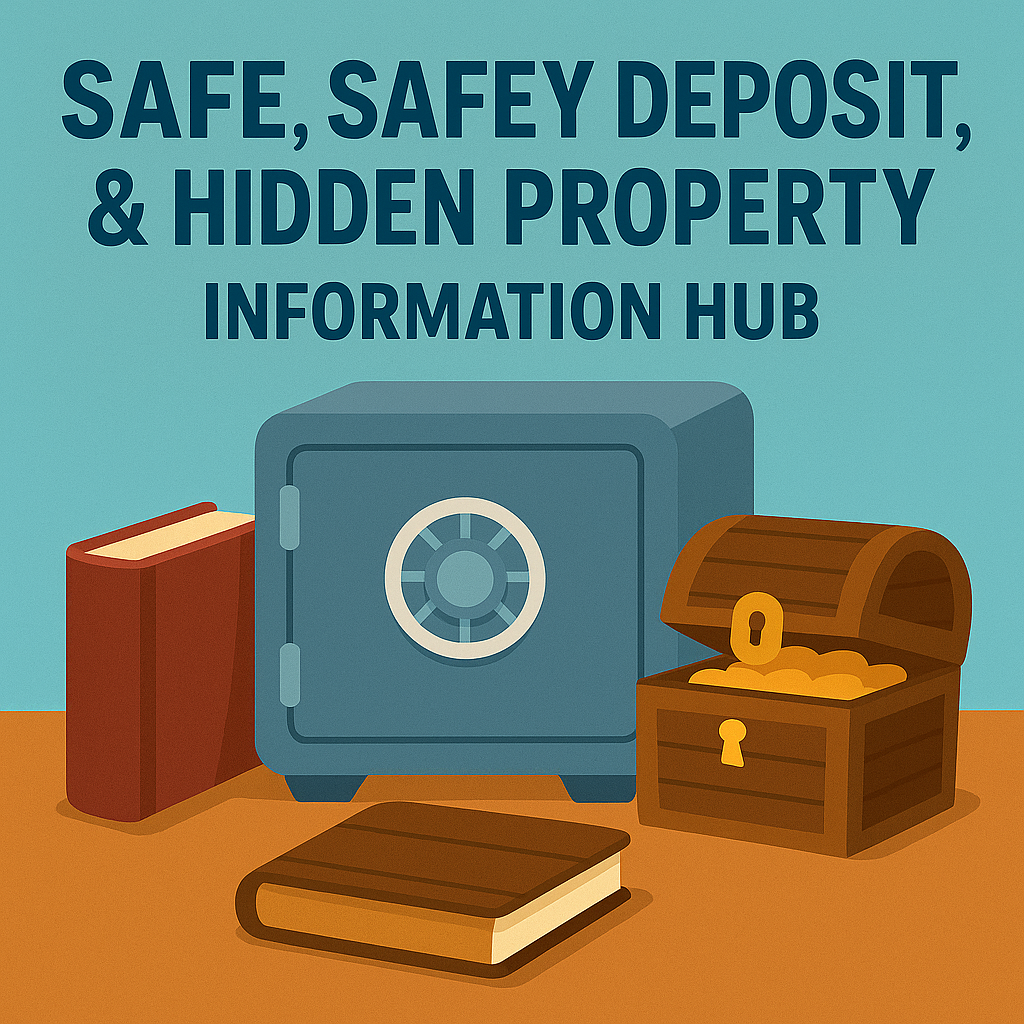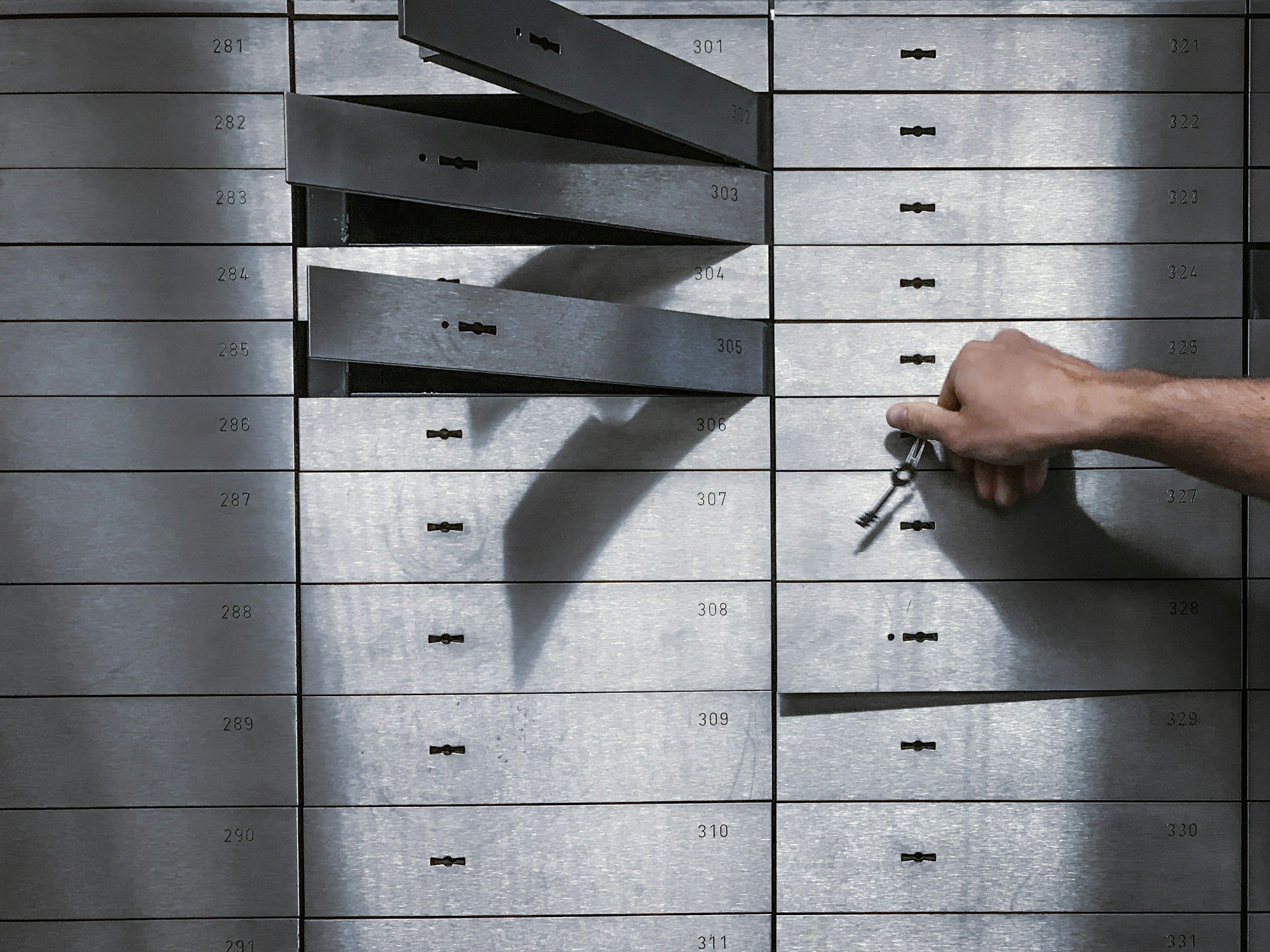Not everything is in a file drawer.
The Safe, Safety Deposit, and Hidden Property Information Hub
Text

Key Things To Know
Safes and safety deposit boxes can be full of surprises, both good and frustrating. Here’s what you need to understand before you try to open one, manage its contents, or include it in an estate.
- Safety deposit boxes are not immediately accessible: When a bank learns the box owner has died, they may freeze access to it. Even if you have a key or were listed as a co-signer, you will likely need legal documents like a death certificate and Letters Testamentary or Letters of Administration before the bank allows access.
- Hidden safes may be overlooked: Many people install small home safes in closets, under beds, inside cabinets, or behind walls. They might not be listed in a will or mentioned out loud. If you are managing someone’s estate, a thorough and respectful search may be needed.
- Contents may need to be reported for probate: Valuables found in a safe or deposit box—such as cash, jewelry, coin collections, or documents—must be disclosed as part of the estate inventory. Keeping records of what you find protects you as executor and ensures accurate distributions to heirs.
- Do not break into a locked safe on your own: Trying to force open a safe without proper tools or knowledge can damage the contents and lead to legal or insurance complications. Call a professional locksmith or safe technician who has experience working with estates and will document the process.
- Create a detailed inventory and keep records: Photograph and list every item found in the safe or safety deposit box. This documentation may be required for probate court and is essential for resolving any disputes or tracking the chain of custody.
How To Access A Safety Deposit Box In A Bank After Someone Dies
Bank vaults don’t open on trust alone. Here’s how to legally and properly access a deceased person’s safe deposit box.
Step 1: Confirm the Existence and Location
Start by figuring out whether the person had a box and where it was.
- Check for a key and bank documents: Look through files, drawers, or estate binders for a physical key or paperwork related to a bank safe deposit box.
- Contact known banks: If you don’t find a key, contact banks where the person held accounts. Ask if they maintained a box there and what their policy is for access after death.
Step 2: Gather Required Documents
Most banks won’t even confirm a box exists until you prove legal authority.
- Get a certified copy of the death certificate: Banks typically require an original certified death certificate. Keep a few copies on hand.
- Obtain Letters Testamentary or Letters of Administration: These documents show that the court has authorized you to act on behalf of the estate.
- Bring your photo ID: You’ll need to prove your own identity to the bank.
Step 3: Schedule and Attend a Bank Appointment
Access usually requires an in-person visit and sometimes supervision.
- Call the bank and ask about their procedure: Every bank is a little different. Some require a notary, manager approval, or that the box be opened in front of a witness.
- Schedule an appointment at the correct branch: Make sure you’re going to the branch where the box is physically located.
- Bring someone with you if helpful: A second set of eyes, especially during inventory, can be reassuring and may serve as a witness.
Step 4: Open the Box and Inventory Contents
Treat this moment with care—it may contain valuables, documents, or deeply personal items.
- Open the box in the presence of a bank representative: The bank may require one of their employees to be present when you open the box.
- Create a written and photo inventory of contents: Take detailed notes and photos of everything inside. This can help with probate reporting and prevent disputes.
- Do not remove anything without permission: Some banks allow you to remove only the will and burial instructions at first. You may need additional court approval to remove other items.
Step 5: Store or Transfer Items Securely
Once you have legal authority, you can manage the contents according to the estate plan.
- Transfer contents to the estate or proper heirs: Follow the will or the probate court’s direction. Keep records of who receives what.
- Store valuables in a secure estate safe or trusted location: Until the estate is settled, store items in a safe and documented place, not a personal drawer or untracked location.
- Keep all inventory documentation with your estate records: Place copies in the CLEAR Kit or your estate binder to ensure everything stays organized.
Articles
Frequently Asked Questions
People often have questions about hidden property, legal access, and what to do with what they find. These answers can help you avoid common mistakes and delays.
Disclaimer: The information provided on this website and by Buried in Work is for general informational purposes only and should not be considered legal advice. Please consult with a qualified attorney or subject matter expert for advice specific to your situation.

